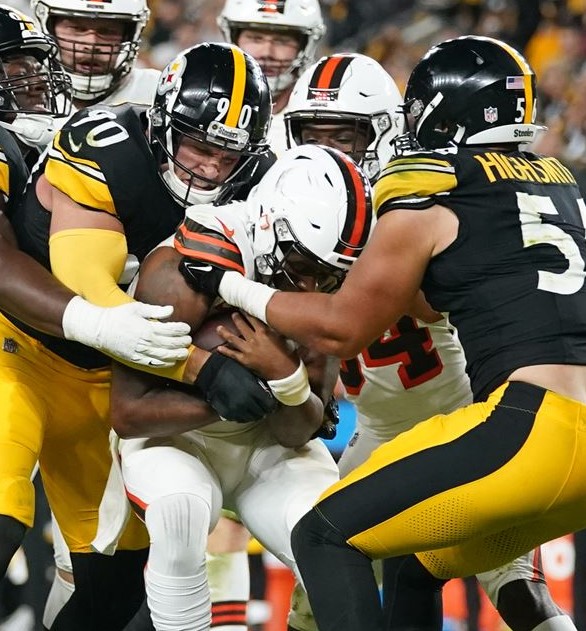Best, Worst, and Ordinary Draft Classes
As we get ready for the launching of the 2014 draft class next weekend, a class that has promise of being a good one, let’s take a look at draft history for context. It’s pretty much universally agreed that the best draft class in Steelers history, and indeed in all NFL history, is 1974. That draft class delivered an astonishing four Hall of Famers in the first five picks, a feat unlikely to be matched in our lifetimes. But what were the other top classes? And what about the worst? The sortable table below helps to reveal the answers. (Before you object, this kind of analysis is of course very limited. For one thing, the numbers follow the players rather than the team. The data reveals something about the value of Steelers draft selections regardless of whether the players played for Pittsburgh or for other teams.)
In this chart, we are looking at all draft classes from 1969 to 2008. The “modern era” can be considered to have begun for the Steelers with the drafting of Joe Greene in 1969, so that sets the start of the evaluation. Because recent draft classes are still writing their stories, we can’t look at them. Classes that are less than about five or six years are still largely active in the NFL so their full numbers will not be known for awhile. On the other hand, we know that the story of the 2008 class is now complete because none of the draftees remain active in the NFL. Not only does this hint at some of the answers to come, but it also provides a good ending point for the evaluation. It is true that there are a smattering of active players from previous years, but not too many. Seasons prior to 2000 are officially “in the books” as there are no longer active players, but years from 2000-2007 are still incomplete, and in the cases of 2004 and 2007, significantly incomplete. But, we have to start and stop somewhere.
The chart shows the following results for each year: HOF players, total games played by draftees, total all-pro player-years, total pro-bowl player-years, total player-years as primary starters, and total game starts. If we look by HOF players, there is no doubt that 1974 wins easily so we need look no further. Total games played (G) is not necessarily an indicator of the greatness of individual players, but it does tell us something about the overall net impact of the class on the team and therefore is a good indicator of the quality of the draft. By this measure, ’87, ’71, and ’93 were the best, with over 1000 total games played each. On the other end of the scale, the very worst draft class is 2008 which produced only 201 games played. At 285, the 2006 class was not much better.
The results for all pro (AP) and pro bowl (PB) are consistent with each other. The best are ’74 and ’87 by a significant margin. Similarly, years as primary starters (PS) and total game starts (GS) are consistent. 1987 produced the most primary starters and game starts, followed by ’71 and ’74. On the flip side, 1983 and 2008 tied for the most anemic starters by a wide margin, with only 5 player-years as primary starters from each of those classes. The 1983 years would have been somewhat better had the Steelers selected Dan Marino, but instead the most significant player from that class was a punter. Total game starts reveals an additional bad year, 1978. That class produced only 75 total game starts, consistent with the beginning of the end of the Dynasty. To be fair, it must have been hard to break into the extant starting lineup. 2008 provided only 81 game starts, while 1985 produced 87 and 1983 produced 89, delivering the doldrums of the Steelers Lost Decade. It’s easy to see how one or two bad drafts can result in several years of mediocrity. Given the 2008 class, there is little room for error in 2014.
Click below to see and sort the table.
[csv src=https://steel-balls.org/wp-content/uploads/2014/08/drafthist.csv number=1,2,3,4,5,6,7]
